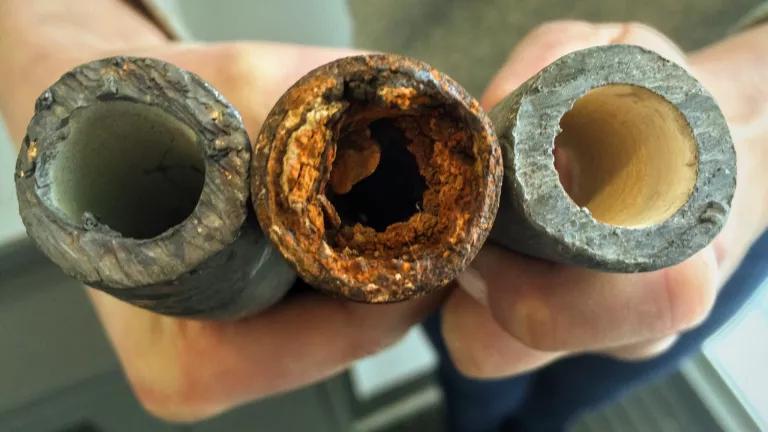
Flint Lead Pipe Replacement
The Environmental Protection Agency (EPA), the federal office responsible for regulating lead in drinking water, will be holding public listening sessions to begin the process of fixing the broken Lead and Copper Rule (LCR). The LCR is the rule that regulates the monitoring and control of lead in drinking water. As we’ve seen from Flint, Michigan, Newark, New Jersey, Pittsburgh, Pennsylvania, and Washington D.C., this rule needs to be improved ASAP.
While the virtual listening sessions were held from April 28 and May 5, you can also file written comments any time before July 30 here: https://www.regulations.gov/search?filter=EPA-HQ-OW-2021-0255.
Please check out NRDC’s Tips for Testifying below.
Why you should care
Lead pipes in the ground are the equivalent of drinking water from a lead straw. There is no safe level for lead exposure, which impacts Black and Brown communities at a disproportionate rate and is a cornerstone for environmental racism. In fact, the NRDC report Watered Down Justice found that race is the strongest relationship to the length of time people have to live with drinking water violations, clearly demonstrating that our drinking water laws do not protect everyone equally.
It’s time to get the lead lines out with a national, enforceable plan and implement the strongest, most health-protective standards so that no more communities like Flint experience a devastating crisis again. Until we do, this dangerous neurotoxin will remain a threat to everyone, particularly the development of children.
That’s why we need the Biden Administration’s EPA and Congress to:
- Remove every lead pipe from the ground within 10 years—all 6-10 million found in every state, territory and many First Nations.
- Strengthen the LCR to require strict, science-based standards and quick lead pipe replacement.
- Pass water infrastructure reform that invests $45 billion to remove lead pipes in the next decade at no cost to homeowners, which will also create good living wage jobs.
Health experts agree there is no safe level of exposure to lead. Old, leaching pipes can cause lead to enter the water we drink, which ends up in our bodies when we cook our food or prepare formula for babies. It can cause irreversible damage -- affecting the nervous system, fertility, and cognitive ability, among other functions.
It is imperative the EPA make transformative changes to the LCR and get the lead pipes out of the ground, which is essential to ending the harmful legacy of lead. This historic opportunity falls well within the Biden Administration’s water infrastructure and environmental justice priorities. It’s time to take action now.
Tips for sharing your concerns with EPA
- Prepare your comments ahead of time by writing it out (even just an outline) and practice reading it while you time yourself. You’ll get 3 minutes to make your comments—short and to the point!
- Start with the personal:
- What is your experience with lead-contaminated drinking water?
- Why are you personally concerned about this urgent issue?
- Next, outline why safe water is important.
- There is no safe level of lead, but it’s found in tap water in states across the nation.
- It’s time to make history by setting stricter lead in tap water rules and requiring the removal of all old lead pipes—which effectively leave millions of people to drink from a lead straw—within 10 years.
That’s it. Your voice is important, so please consider sharing it with EPA.




